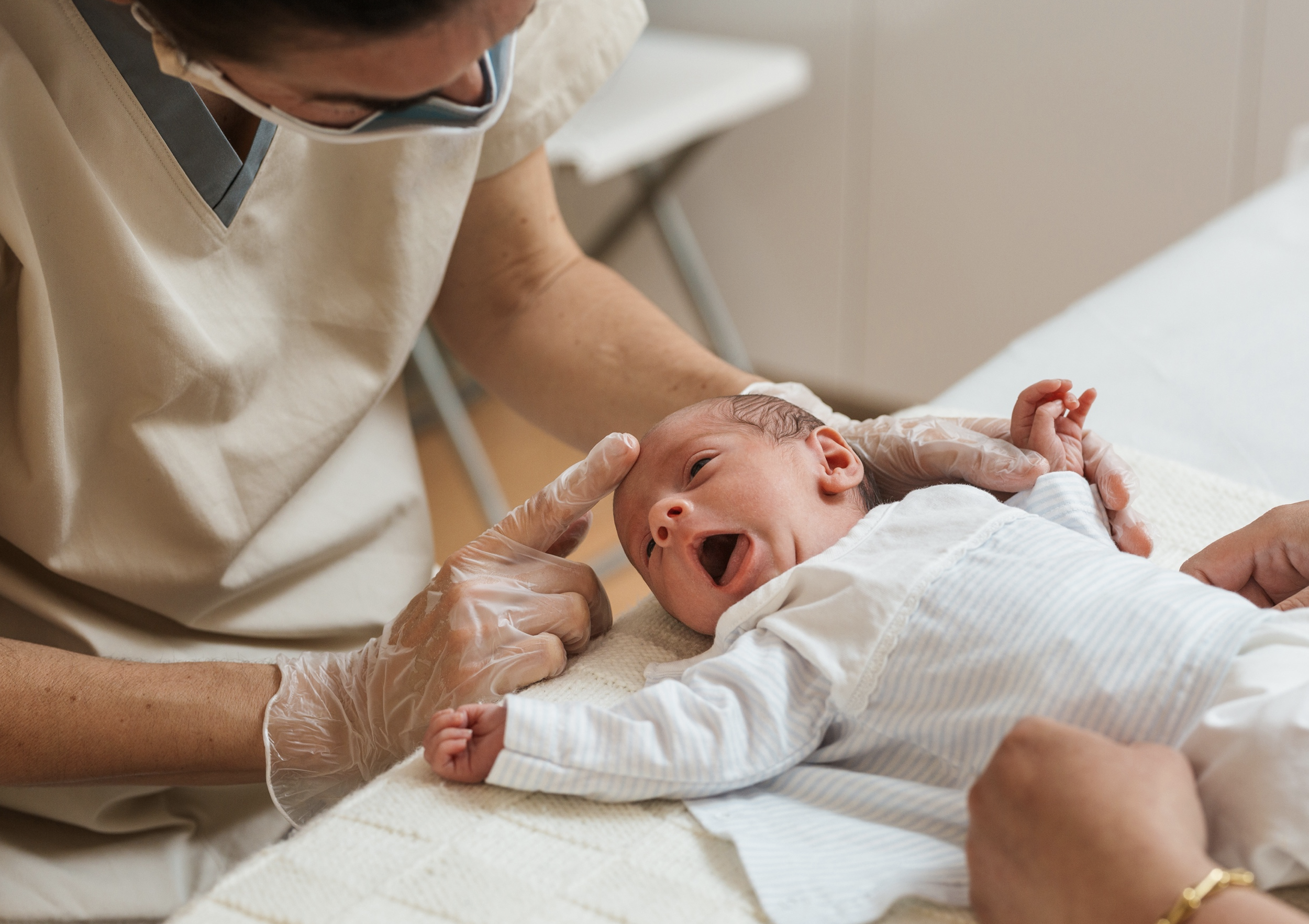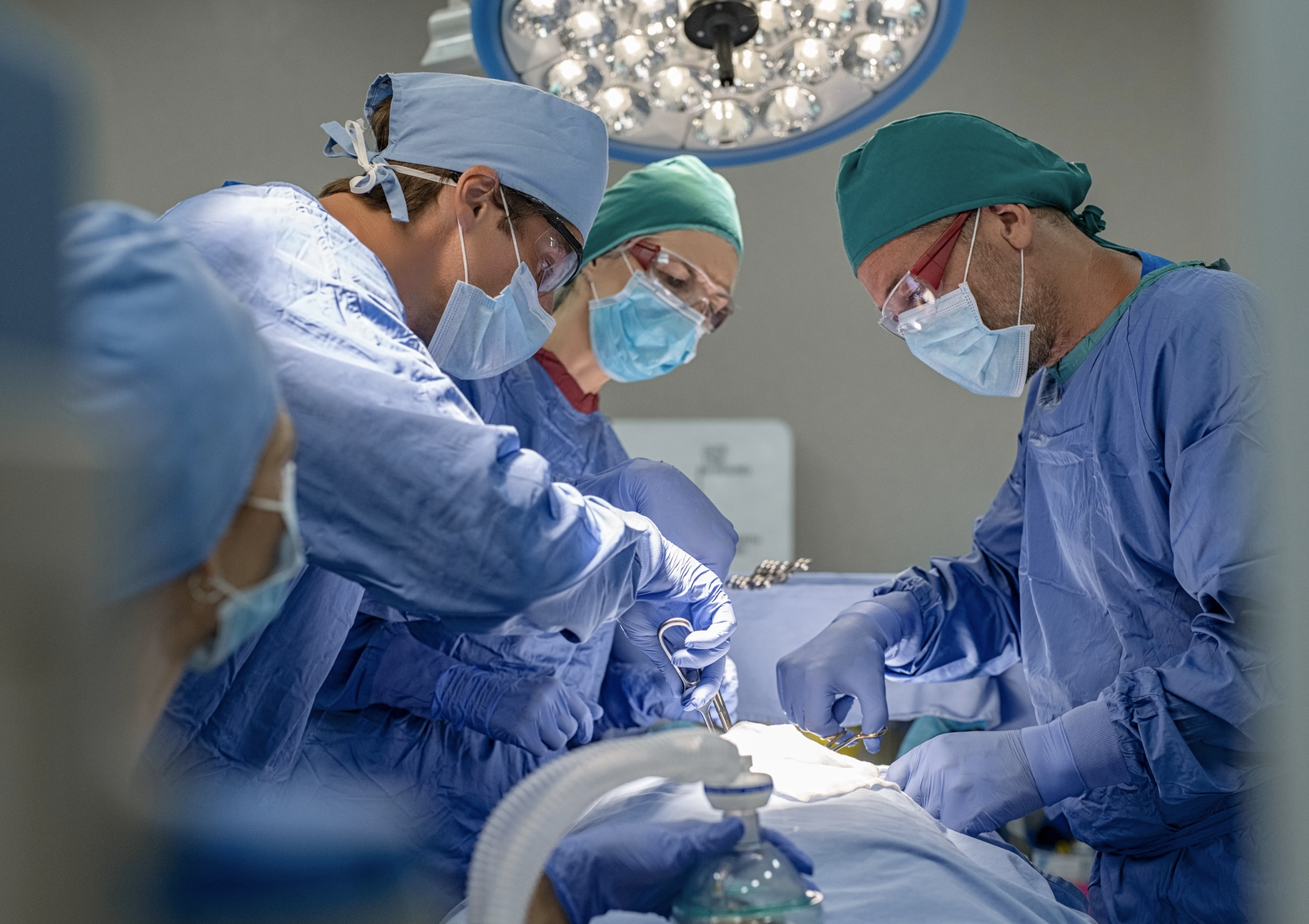The Types of Primitive Reflexes in Infants and Its Meaning.
Introduction
Primitive reflexes, also known as developmental reflexes, are special reflexes that originate from the brainstem and are present from birth to early infant developmental stages. These reflexes are involuntary motor responses which facilitate survival. When the brain matures, the primitive reflexes should and must be integrated (meaning disappearing) by the 4-6th months of age and replaced by voluntary motor activities. Some reflexes will be present for up to 3 years, which is normal. However, suppose the primitive reflexes are to remain or regress to having primitive reflexes; in that case, it will demonstrate that the infant has a neurological disorder/central nervous system dysfunction. For example, if certain primitive reflexes persist after 6 months of age and/or if there are 5 abnormal reflexes, the outcome demonstrates a strong correlation to cerebral palsy. The same can be said of adults who have reemerging primitive reflexes that could potentially indicate brain and nervous system pathologies. For example, adults demonstrating frontal release signs have been correlated with Alzheimer's disease, multiple sclerosis, and schizophrenia.
The examiner thus can elicit these reflex responses not for their enjoyment (although it is entertaining) but to determine if the infant's development is on track. Before starting any of the reflexes or the paediatric examination as a whole, bear in mind that babies enjoy being uncooperative; hence it is all about negotiating. A few etiquettes and tips an examiner must think of are:
Involve the parents and inform them as much as you can. It is not your child, it is theirs, and it is quite new and precious in their eyes.
Some of the examinations may be performed as the mother is nursing, be creative and work around it. Use this calm moment as an opportunity.
Perform the essentials opportunistically.
The examining room is cold; thus, make sure to cover the baby.
The examining table is not high for an adult but may be a story high in the perception of a child. Always make sure there is a body between the child and the edge of the bed.
Anthropometry measurement is non-negotiable and has to be done.
Lookout out for "odd". Trust gut feeling and what the brain sees as abnormal. Lookout for asymmetry as it is the window to abnormality.
Think of congenital abnormality.
Take parents' concerns seriously.
Primitive oral reflexes
Sucking
Appears at 28 weeks gestation and disappears by 3-4 months of age. However, some literature mentions as early as 14 weeks gestation.
The sucking reflex is essential for coordination and aids in breathing and swallowing. An object is placed in the oral region or by placing a gloved finger in the infant's mouth to elicit such a response. Evaluate the sucking strength and make sure there is a strong seal formed around the mouth and a firm grip. A poor sucking reflex in infants is an indirect indicator of neurological maturity. It may suggest basal ganglia or brainstem dysfunction.
Rooting
Appears at 34 weeks gestation and disappears by 3-4 months of age.
The rooting reflex describes the infant's mouth turning towards a stimulus. To elicit the response, lightly stroke the infant's cheek towards the corner of the mouth. The infant's head should turn towards the stimulus and open their mouths.
Snout
Some sources mention up to 1 year of age.
The snout reflex, known as orbicularis oris reflex or "pout", is elicited after the examiner gently taps the closed lips near the upper midline lip. The lips should pucker as the muscles contract causing the mouth to look like a snout. This reflex is considered a frontal release sign and is usually inhibited by the frontal lobe. However, if that part of the brain is damaged, its inhibition is not as sufficient, thus showing the reflex. Interestingly, frontal release signs may be present in a patient with disorders such as dementia, metabolic encephalopathies, closed head injuries, and hydrocephalus.
Palmar grasp
Appears at 26 weeks gestation and disappears by 3 months of age; however, some literature mention up to 6 months of age. Interestingly, the Palmar grasp can be seen on ultrasound as early as 16 weeks gestation age trying to grasp the umbilical cord.
The examiner places the index finger into the infant's palm, which results in the infant flexing and grasping the object providing the pressure (in this situation, the finger). In some cases, the grasp is so tight that withdrawing the finger upwards can lift the infant off the bed for a few seconds (usually with term infants). Avoid touching the dorsal of the hand as it might elicit the hand to open as a reflex.
Poor response or the inability to grasp may demonstrate a peripheral or spinal cord involvement, especially if asymmetry is noticed.
Plantar grasp
Appears at 30 weeks gestation and disappears by 10-15 months of age.
The plantar grasp is elicited by pressing the thumb against the sole of the foot just below the toes. The toes should flex and adduct. In some cases, the infant can be held vertically, and by touching the floor, the toes should again flex and adduct.
The meaning of an absence or reduced plantar grasp could suggest spasticity in later development.
Plantar reflex
Disappears by 12 months.
The plantar reflex is performed by applying pressure to the lateral aspect of the plantar surface of the foot. As a result, the great toe extends, and fanning of the other toes occurs; this motion is known as the Babinski sign. The Babinski sign is standard in infants as the corticospinal tracts have incomplete myelination. Be careful not to start on the ball of the foot as a plantar grasp might be initiated, which will be flexion and adduction of the toes.
Moro
Appears at 32 weeks gestation and disappears by 3-6 months of age.
The Moro reflex is thought to be a protective reflex in response to abrupt changes in body position, especially if it is the sensation of falling. Before eliciting this reflex, it is always a good idea to let the parents know about the Moro reflex. Do not tell the parents you will “drop” the infant to perform the reflex; choose your words carefully. Make sure to be above the bed or on a soft platform (just in case).
To prepare:
Position the infant in a semierect position with strong and careful head support, which should be positioned midline.
Make sure the hands/arms are more or less flexed and positioned in the body's midline.
Elicit an abrupt "fall" from the original semi-erect position to supine.
The infant will be surprised or startled and should:
Release the arms.
Abduct the shoulders.
Extend the elbows.
Spread the fingers and immediately flex the hands.
The thumb and the finger may form a "C" shape, and the arms will return to the midline.
Wait for the incoming audible cry.
Repeat if the test was not sufficiently done correctly.
The significance of the Moro is that if there is a total absence of the reflex, it signifies a dysfunction of the central nervous system and should have prompt investigations. A unilateral Moro reflex could represent a brachial plexus palsy or a potential fracture. Keep in mind that premature infants may not have the strength to demonstrate a good Moro reflex compared to full-term infants.
Stepping/walking reflex
Appears at 32 weeks gestation and disappears by 1-2 months of age.
The stepping reflex is elicited by holding the infant upright over the soft mat. The feet should be flat on the ground. This will initiate a reciprocal flexion and extension of the legs. Although the infant cannot hold its weight, the slow stepping gives the illusion that the infant is walking.
The literature mentions the significance of this reflex is not entirely clear.
Galant reflex
Appears at 32 weeks gestation and disappears by 2-4 months of age.
The Galant reflex, known as truncal incurvation reflex, is elicited by holding the infant in a ventral suspension position. The skin on the back (near one side of the spine) is then stroked from the thorax to the sacrum. The infant's trunk and hips should swing (or laterally flex) towards the same side of the stimulus. This is a normal response.
T2 and S1, in theory, should have some indication of segmental integrity as the Galant reflex helps rule out brain or spinal damage at birth.
Asymmetric Tonic Neck Reflex (ATNR)
Appears at 35 weeks gestation and disappears by 6 months of age.
To elicit the reflex, place the infant casually on its back on the bed/mat. Turn/rotate the head gently to the side. The side the face is pointing should have the arms and legs extended and flexion on the contralateral part of the infant's body. A "fencing posture" should be seen. The upper extremities are more prominent in showing the reflex than the lower extremities.
It is never normal if the ATNR is seen as a resting posture.
Symmetrical Tonic Neck Reflex (STNR)
Appears at 6-9 months of age and disappears by 2-3 years of age.
The STNR appears and develops around 6-9 months of age (while the ATNR disappears) as it aids in the child with crawling in later months. To elicit the reflex, flex the infant's neck (by extending the back of the neck). As a result, the upper extremities should contract, and the lower extremities should extend. Similarly, by extending the neck (contracting the back neck muscles), the upper extremities will extend, and the lower extremities will contract. This reflex aids in crawling and pushing up onto their hands and knees. However, to progress to true crawling, the infant needs to let go of the STNR.
If the reflex is not integrated correctly, the infant may struggle to creep and crawl. In addition, if the reflex is retained beyond 2-3 years, it may indicate physical and neurological developmental delays.
Tonic Labyrinthine Reflex (TLR)
TLR forward: appears from as early as 12 weeks gestation and disappears by 3-4 months of age.
TLR backwards: appears from birth and is slowly inhibited from 6 weeks to 3 years.
There are two stages to this reflex. To elicit the reflex:
Lie the infant on its back and gently tilt the head forward (neck flexion) above the spine level. The arms and legs should flex or curl towards the body's midline.
For the neck extension, lie the infant on the bed with their heads over the edge of the bed.
Extend their head below the spine level. The arms and legs should extend.
Be careful not to be confused with the Landau reflex, and remember that it is too early for the STNR to present itself.
The TLR reflex is thought to help the infant against the newly found gravity by assisting in developing neck and head control, increasing muscle tone, improving posture and balance, and developing the proprioceptive and balance senses.
Suppose the TLR remains beyond the 6 months mark. In that case, there may be an indication of developmental delays and/or neurological abnormalities such as cerebral palsy.
Landau reflex
Upper Landau: appears at 1-3 months of age and disappears by 3 years of age.
Lower Landau: appears at 4 months of age and disappears by 3 years of age.
The Landau reflex helps the infant coordinate between the upper and lower body. The upper Landau demonstrates the infant to lift their heads and chest when they are in the prone position. The lower Landau demonstrates the infant to lift their heads/chest and extend and lift their lower extremities. The back may be arching. Lie the infant on its tummy or prone position and grab their attention by making them look upward. The reflex should be elicited, and the infant might look like they are sky diving with all their limbs stretched out, which can also be described as a superman pose.
Another way to elicit the Landau reflex is to grab the infant and suspend them in a horizontal plane on the examiner's hand. Extend the head above the plane of the trunk. The trunk will straighten out, and the legs will be extended. Thus the baby opposes gravity. When pushing the head into a flexion position, the legs will flex. The head then can be released, and the infant will raise its head, and the legs will go back into an extended position.
An absence of the Landau may indicate a sign of a neurological disorder, such as cerebral palsy or motor neuron disease.
Glabellar
Could not positively be sure when the Glabellar reflex appears and disappears.
The Glabellar reflex, also known as the Glabellar tap sign, is elicited by tapping repetitively on the glabella region of the face (the smooth portion of the forehead above the nose and between the eyebrows). The infant should blink on each tap, which is normal. The examiner should try to perform the reflex from behind and out of sight to remove visual stimuli. The reflex is thought to protect the newborn’s eyes from injury.
The reflex is abnormal in adults. Individuals with intact cognition will have habituated to the tap and suppressed the blinking. Individuals who persist with blinking are known to have the Myerson's sign, which is often associated with Parkinson's disease.
Parachute reflex
Appears at 8-9 months of age and matures by at least 1 year of age.
The parachute reflex is one of the last postural reflexes to develop. Grab the infant into a horizontal plane and face down or rotate abruptly towards the bed/mat to elicit the reflex. The arms should extend out as if the infant is trying to break its fall or catch itself.
Swimming and diving reflex
Appears at birth and disappears by 4-6 months.
Not done in practice and risky to perform. When infants are placed face down in a pool of water, the infant will start to paddle and kick. The water enables to "remove" the gravity on the limbs and allows the infant to move more freely. The reflexes also involve apnea, slowing the heart rate (bradycardia reflex), and vasoconstriction. The glottis is sealed off, diverting water to the oesophagus. The response is to conserve oxygen usage. Babies thus instinctively hold their breath underwater.
Reflex integration, retention and reappearance
Reflex integration means reflex disappearance and is expected at the allocated time frame. The examiner should start worrying when an infant is not integrating their primitive reflexes on time as it can be associated with neurological pathologies. A persisting primitive reflex needs prompt follow-ups.
As the infant matures, so does the nervous system. The involuntary motor response, which is vital for survival and growth development, needs to be replaced by voluntary motor responses. If primitive reflexes are retained, the infant will experience motor (gross and fine) and cognitive skills delay. These delays can be noticed when children struggle to do certain activities that their classmates can perform, such as movement coordination (running, cycling, et cetera), hand coordination, eye to hand coordination and posture. Some children with retained reflexes are more prone to developing attention-deficit/hyperactivity disorder (ADHD).
The same idea can be said for reappearing (reemerging or regression) primitive reflexes. Unfortunately, as mentioned earlier, adults with reappearing primitive reflexes show signs of neurological disorders. Therefore, always keep this in mind when performing a geriatric examination on patients on the ward or in the nursing home.
Published 15th May 2022. Last reviewed 30th May 2022.
Reference
BRMT Canada authors. Tonic & Landau Reflex. BRMT Canada website. https://brmtcanada.com/blomberg-rhythmic-movement-training/reflexes/tlr-landau-reflex/. Accessed May 10, 2022.
Gieysztor EZ, Choińska AM, Paprocka-Borowicz M. Persistence of primitive reflexes and associated motor problems in healthy preschool children. Arch Med Sci. 2018;14(1):167-173. doi:10.5114/aoms.2016.60503
Gill K, Lewis R. What Are the Primitive Reflexes and How Are They Useful? Healthline website. https://www.healthline.com/health/baby/primitive-reflexes. Published May 19, 2020. Accessed May 10, 2022.
Jameson J. Primitive Reflexes. Jewel Autism Centre website. https://jewelautismcentre.com/jewel_blog/primitive-reflexes/. Published April 24, 2019. Accessed May 10, 2022.
Larsen PD, Stensaas SS. Newborn examinations. The University of Utah School of Medicine website. https://neurologicexam.med.utah.edu/pediatric/html/newborn_n.html#22. Accessed May 10, 2022.
Modrell AK, Tadi P. Primitive Reflexes. [Updated 2022 Mar 9]. In: StatPearls [Internet]. Treasure Island (FL): StatPearls Publishing; 2022 Jan-. Available from: https://www.ncbi.nlm.nih.gov/books/NBK554606/.
Talley NJ, O'Connor S. Talley & O'Connor's clinical examination. Chatswood, NSW: Elsevier Australia, 2018.
Vargiami E, Zafeiriou DI. Primitive Reflexes: Growth in Childhood, Newborns and Infants. https://doi.org/10.1002/9781119171492.wecad010
Zafeiriou DI. Primitive reflexes and postural reactions in the neurodevelopmental examination. Pediatr Neurol. 2004;31(1):1-8. doi: 10.1016/j.pediatrneurol.2004.01.012. PMID: 15246484.




























